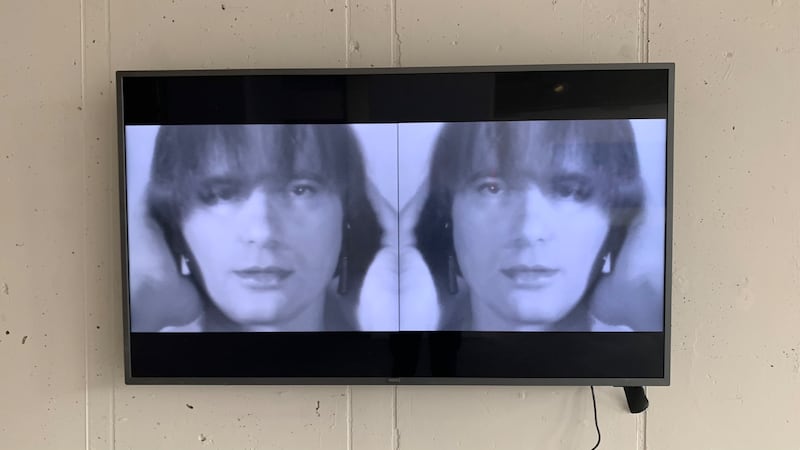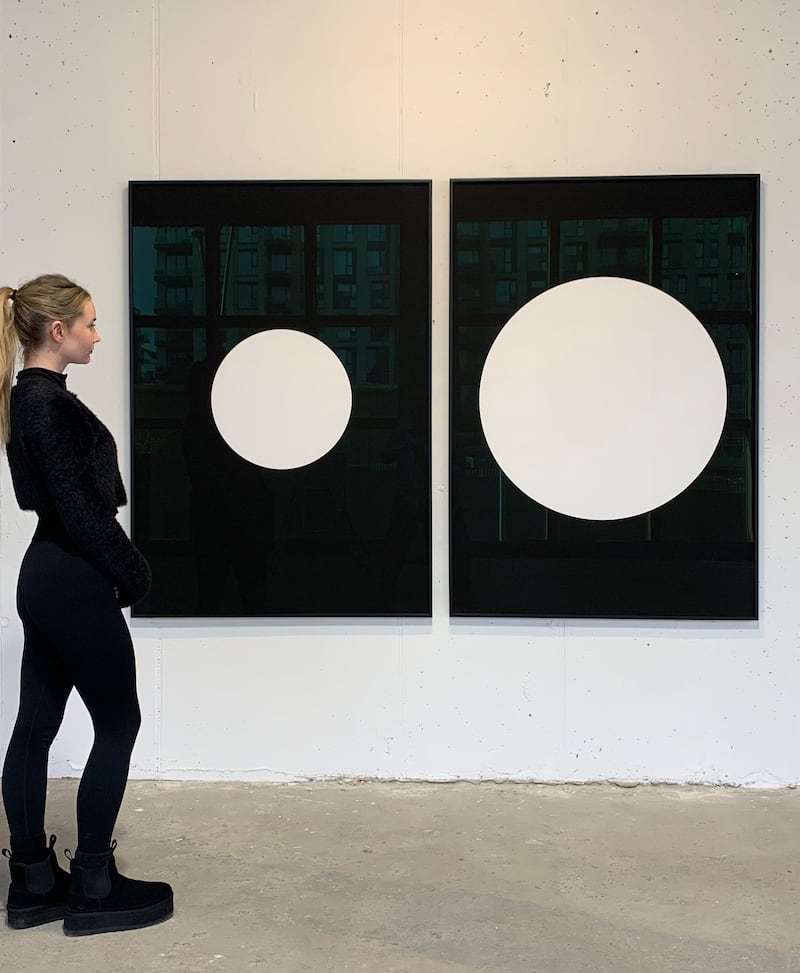Lovers
Green on Red Gallery, Dublin
★★★★☆
According to Jerome O’Driscoll, the inspiration for this exhibition was Lover Set on Fire in Bed, Tom Hunter’s cibachrome print from 2004. The owner and curator of Dublin’s Green on Red Gallery was reviewing its archive when he chanced upon Hunter’s evocative scene. Staring at the expansive photographic print, O’Driscoll and his team reflected on the work’s surreal depiction of love, which features a black-garbed woman sitting beside her lover in bed, his slumber unbroken by the flames that riddle the sheets. The dreamlike image is suffused with overtones of possessiveness and violent jealousy, which is in stark contrast to the tranquil passivity of the figures in repose. It is reminiscent of what Roland Barthes, in his genre-bending meditations A Lover’s Discourse, describes as the experience of “gentle despair”.

Struck by the propitious timing – St Valentine’s Day was just around the corner – O’Driscoll contacted several of his gallery’s high-profile artists and sought, impromptu, to gather a collection of their works that thematise love and the role of the lover. Among the cohort represented are Hunter, Alan Butler, Fergus Martin, Nigel Rolfe, Caroline McCarthy, Nil Yalter, Xavier Theunis, John Cronin, Mark Joyce and Damien Flood.
Given the spontaneous curatorial approach, it is a delight to find such a strong thematic coherence within the show. At times it’s almost as though the artworks were designed to be in dialogue with one another. Yalter’s video installation Le Chevalier d’Éon, for instance, acts as the perfect tonic to Hunter’s aesthetic of despair, washing out his traces of obsession with a profound and attentive sense of care. The Turkish artist’s black-and-white footage from 1978 depicts an unnamed friend transitioning from male to female, in what has been referred to as the first artwork from a Middle Eastern context to engage transgender identity.

The title references Charles/Charlotte d’Éon de Beaumont, an androgynous 18th-century French diplomat and spy who presented as male and female throughout their life, and whose biography was a touchstone in Yalter’s friendship. In one particularly compelling section, our modern-day Chevalier is dispersed through mirrors and live-capture monitors, and the split screen is almost overwhelmed by a multitude of faces. Yet their expression of wry, placid amusement is salutary, and the scene does not feel fragmented or alienating; rather, it becomes another exercise in devotional attention.
‘There are times I regret having kids. They’re adults, and it’s now that I’m regretting it, which seems strange’
Cillian Murphy: ‘You had the Kerry babies, the moving statues, no abortion, no divorce. It was like the dark ages’
The Dublin couple who built their house in a week
John Creedon: ‘I was always being sent away, not because they didn’t love me, but because they couldn’t cope’
Hunter and Yalter’s work couples easily, as theirs are among the few figurative pieces in the show, which is otherwise replete with abstraction. In keeping with the theme of the exhibition, diptychs and visual pairs are found throughout: Theunis’s Sans Titre (Paysage #130.7), for example, features two high-intensity colour blocks that are almost identical in tone, provoking an unusual perceptual-physiological response in the viewer.

Martin’s White Moons is notable as an instance of eloquent minimalism. Two perfect circles, one larger than the other, are positioned in the middle of a black plane, which oscillates between a background and a single-dimensional surface. This austere work has a distinct lure, encouraging a sort of restful contemplation; at the opening, it was noticeable how people seemed drawn to stand and stare throughout the evening.
An immersive and highly recommended show.
Lovers continues at Green on Red Gallery, Dublin, until Friday, March 8th




